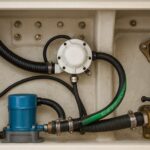Maintaining your yacht’s hull is essential for ensuring its longevity, performance, and safety. While many yacht owners focus on engine maintenance, deck cleaning, and interior care, regular hull inspections are just as important. Partnering with a service specializing in professional yacht maintenance can help you keep your vessel in top condition and avoid costly repairs in the future.
Why Hull Inspections Matter
The hull is your yacht’s first line of defense against the harsh marine environment. It faces constant exposure to water, salt, marine growth, and physical impacts. Over time, these elements can lead to damage, wear, and inefficiencies. Regular hull inspections can help identify issues early, addressing them before they become significant problems.
Key Benefits of Regular Hull Inspections
1. Preventing Structural Damage
Cracks, blisters, and delamination can develop over time, compromising the structural integrity of your yacht. Regular inspections can detect these issues early, allowing for repairs that prevent further damage.
2. Enhancing Performance
A clean, smooth hull reduces drag, improving fuel efficiency and overall performance. Inspections often include removing marine growth like barnacles and algae, which can accumulate and slow your vessel.
3. Extending Lifespan
Routine inspections and maintenance protect your hull from long-term wear and tear, extending the life of your yacht and preserving its value.
4. Ensuring Safety
A compromised hull can lead to leaks or water ingress, posing serious safety risks. Regular inspections ensure your yacht remains seaworthy and safe for you and your passengers.
What’s Involved in a Hull Inspection?
A professional hull inspection provides a comprehensive assessment of your yacht’s exterior below the waterline. Here’s what typically happens during the process:
- Visual Inspection: Experts examine the hull for cracks, blisters, scratches, and signs of corrosion.
- Marine Growth Removal: Any buildup of barnacles, algae, or other marine organisms is cleaned off.
- Paint Condition Check: Anti-fouling paint is inspected for wear, and touch-ups or reapplication may be recommended.
- Structural Integrity Assessment: Any signs of delamination or damage to the fiberglass or metal are evaluated.
- Propulsion System Check: Inspectors often assess the propellers, shafts, and other submerged components for damage or wear.
How Often Should Hull Inspections Be Done?
As part of professional yacht maintenance, it’s recommended to inspect your hull at least once a year. For yachts that are used frequently or stored in saltwater environments, more frequent inspections—every six months—are advisable.
Additionally, a hull inspection should be performed:
- Before long-distance voyages.
- After grounding incidents or collisions.
- When your yacht’s performance noticeably declines.
Why Use Professional Yacht Maintenance Services?
While some owners may attempt DIY hull checks, a professional yacht maintenance service offers the expertise, tools, and techniques to make sure no issue goes unnoticed. Here’s why it’s worth relying on professionals:
- Expert Knowledge: Professionals know exactly what to look for and can identify early signs of damage or wear.
- Specialized Equipment: From underwater cameras to cleaning tools, professionals have the right gear for thorough inspections.
- Time-Saving: Hull inspections and maintenance can be labor-intensive. Letting professionals handle it frees up your time to enjoy your yacht.
- Comprehensive Care: In addition to inspections, professionals can handle cleaning, repairs, and anti-fouling paint applications.
The Role of Anti-Fouling Paint in Hull Maintenance
A key aspect of hull care is maintaining anti-fouling paint. This specialized coating prevents marine organisms from attaching to your hull, reducing drag and protecting the surface. During hull inspections, professionals assess the condition of your anti-fouling paint and recommend reapplication if needed. Keeping this layer intact is crucial for maintaining efficiency and preventing long-term damage.
Additional Tips for Hull Maintenance
- Rinse After Use: Always rinse your yacht’s hull with fresh water after outings, especially in saltwater, to remove salt and debris.
- Schedule Routine Cleaning: Regular cleaning helps prevent the buildup of marine growth and keeps your hull in optimal condition.
- Store Your Yacht Properly: If possible, store your yacht out of the water during the off-season to reduce exposure to harmful elements.
Conclusion
Regular hull inspections are a vital part of professional yacht maintenance, helping to ensure your yacht’s safety, performance, and longevity. By identifying and addressing potential issues early, you can avoid costly repairs and keep your vessel operating at its best. Partnering with a trusted yacht maintenance provider guarantees that your hull—and your entire yacht—remains in pristine condition, ready for every adventure on the water.







